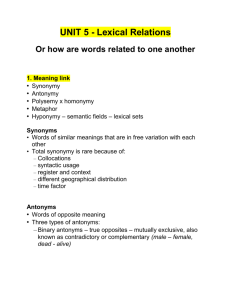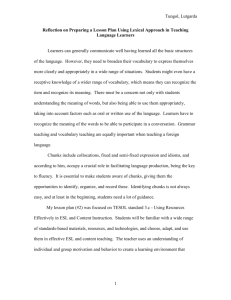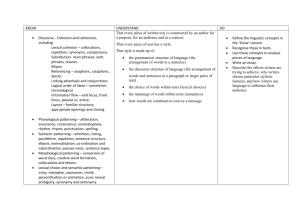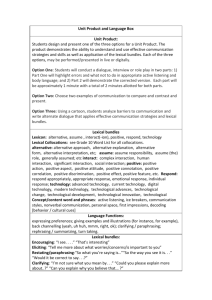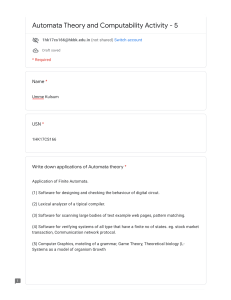Analyzing Lexical Items: Meaning & Context
advertisement
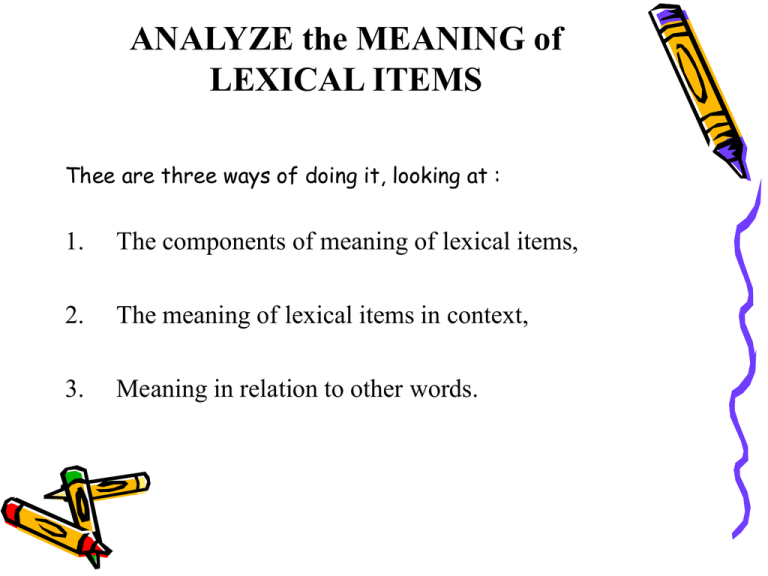
ANALYZE the MEANING of LEXICAL ITEMS Thee are three ways of doing it, looking at : 1. The components of meaning of lexical items, 2. The meaning of lexical items in context, 3. Meaning in relation to other words. COMPONENTS of MEANING • The definition : should use language that Ss understand or avoid using more complex grammar; • Distinction between (1) the everyday meaning and (2) the much rarer second usage; • Examples of how the word might be used • Common everyday knowledge, feelings and reactions that we carry around in our head ( about the word ). T HELPS Ss UNDERSTAND THE MEANING of LEXICAL ITEMS by : 1. Avoiding language more complex than the word he/she’s trying to explain (e.g. avoid complex grammar, keep sentences short ); 2. Focusing on the most important usages; 3. Using examples; 4. Using his/her own and the Ss’ knowledge and feelings to focus on what we understand by this word. WAYS to HELP Ss UNDERSTAND COLLOCATIONS through MEANING in CONTEXT • Pointing out collocations when they occur; • Designing activities that focus attention on the collocations of particular lexical items ( eg finding a number of words that might come after ); • Encouraging the use of dictionary research to check whether a collocation is typical or not; • Setting text gap-fill exercises; • Asking learners to guess meaning from clues in the context, rather than always relying on explanations or dictionaries; • Getting learners to predict likely meanings or lexical items before seeing or hearing a text ( eg the story is about two people arriving in a strange town at night. What words do you think might be in the story ? ). RELATION BETWEEN WORDS • ANTONYMS or OPPOSITES : hot and cold • UNGRADABLE ANTONYMS : on and off • SYNONYMS : stroll and amble • ONE WORD INCLUDES THE OTHER : drink and lemonade • A GROUP of SUBJECT : gardening: flower, pot, spade, seeds • FORMATION of ROOT WORD ( by adding prefixes or suffixes ) : nation – national – international – internationalist.

